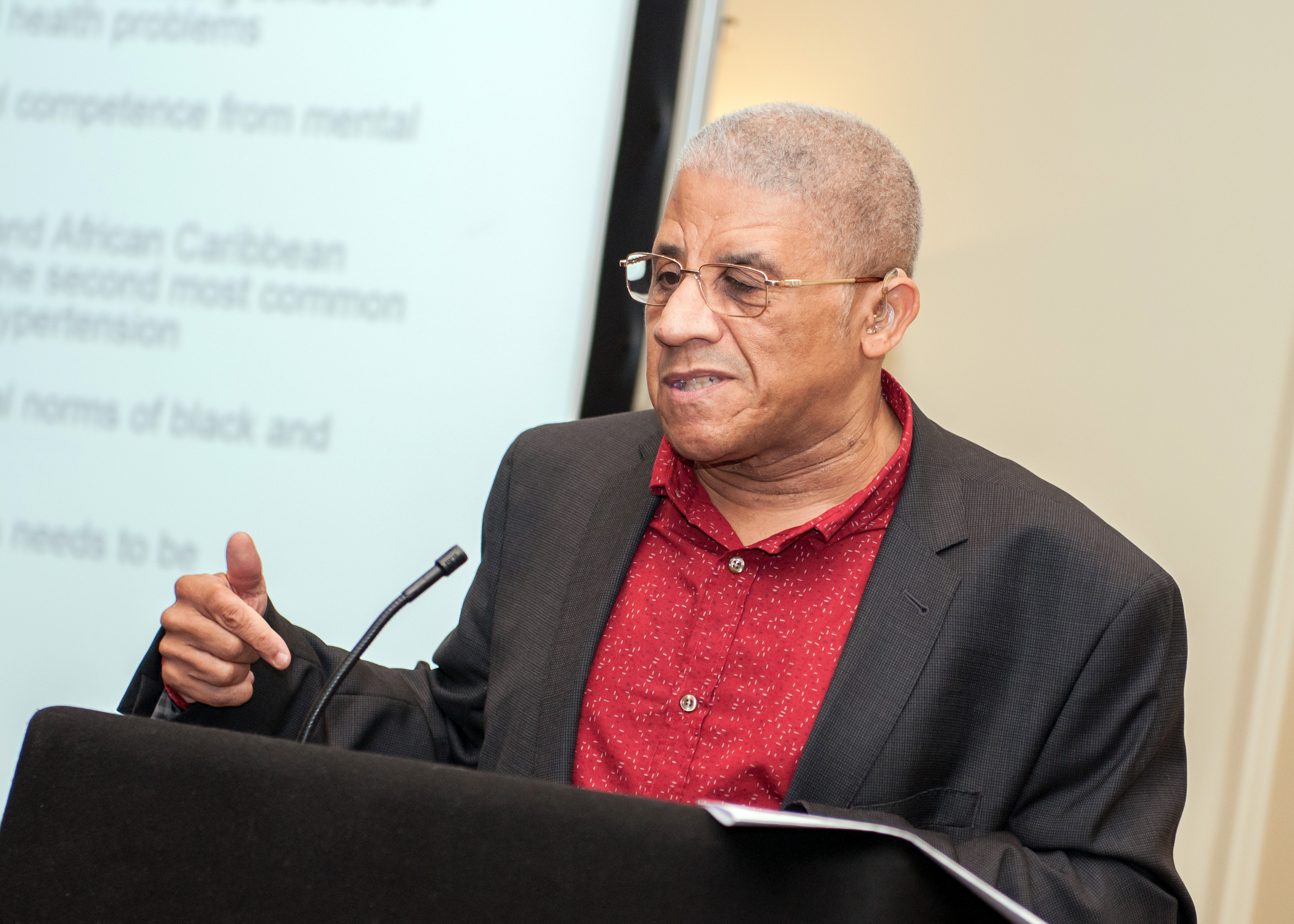Day 1 :
Keynote Forum
David Truswell
PLIAS Resettlement, UK
Keynote: The phoenix project - assisting women involved in the criminal justice system into work, education and training
Time : 9:30 to 10:00 AM

Biography:
David Truswell has worked in community based mental health services in the UK for over thirty years developing services for people with complex care needs and enduring mental health problems including a forensic history in a career spanning the Voluntary Sector, Local Authority Services, and the NHS at a senior level. He has two Master’s level degrees, including a distinction level MBA. He is currently Chair of PLIAS Resettlement, a not-for-profit organization based in London working with offenders and ex-offenders to help improve life skills and self-confidence and reduce re-offending. He has written several articles on the issues faced by Black, Asian and minority ethnic communities in the mental health system.
Abstract:
The presentation is a summary overview of a three-year project delivered by PLIAS Resettlement, a UK not for profit organization working with offenders and ex-offenders. The Project was designed to address some of the shortcomings in the services and support for women in the criminal justice system identified in the Review of Women with Vulnerabilities in the Criminal Justice System by Baroness Corston in the UK in 2007. This involved developing and delivering a programme of personal development, vocational and soft skills for women who had criminal convictions, mental health difficulties or substance abuse issues and who originated from a Black, Asian or minority ethnic background. The project worked with 20 women per year with the goal of achieving a 75% success rate in getting programme graduates into paid work, education or training or voluntary work. The project worked through building confidence, skills and worked to improve family relationships. Group workshops, individual goal planning sessions and personal mentoring was central to the operation of the programme. The development of network links with a wide variety of local organizations helped to provide a wide range of work and trainingn opportunities for the programme candidates. The presentation explores the factors that contributed to the programmes success in achieving its goals and identifies recommendations for further progress using the Phoenix Project approach.
Keynote Forum
Prerna Kohli
Aligarh Muslim University, India
Keynote: Psychosomatic mental health issues in tihar jail male inmates (ages 18-24)
Time : 10:10-10:50

Biography:
Prerna Kohli is a 100 Women Achievers Award Winner (2016) from the President of India, Mr. Pranab Mukherjee. She is a Clinical Psychologist, a Public Speaker, a Workshop Facilitator and a Holistic Practitioner. She offers heart-based workshops and lectures that focus on Life Balance, Self-awareness, and Inner Peace. She blends intuitive wisdom with a solid understanding and believes that “You can talk with a close friend or relative about what’s troubling you, yet it’s not the same as a professionally- trained experienced Psychologist who knows exactly what kind of help you need." Most of all, she creates a powerful holistic approach, specializing in the areas of emotional change. With over 20 years of experience, she has been providing families, individuals, parents and children counselling on being happy. Working with prison inmates is one of the numerous ways through which she repays her gratitude to the society, which has given her the opportunity to heal thousands of persons.
Abstract:
Keynote Forum
Lucy Love
Mountain Health Care, UK
Keynote: Rapid access to talking therapies from the SARC, through partnership working and the use of screening tools
Time : 11:05-11:45

Biography:
Lucy Love is the Assistant Medical Director for Mountain Healthcare, a major provider of forensic medical services for complainants of sexual assault in the UK. She has been a Sexual Offences Examiner for 20 years, including the evaluation of child sexual abuse and regularly appears in court as an expert witness. She is a recognized trainer of Sexual Assault Nurse Examiners and Paediatric Medical Examiners in the UK and is an accredited Psychosexual Therapist in Kent.
Abstract:
Sexual violence may have a negative psychological impact on the victim. Some survivors will in time recover whilst others will go on to develop PTSD or suffer long term psychological sequelae, such as depression and anxiety. The Kent SARC, in conjunction with the Kent Mental Health Partnership Trust have developed a screening tool for nurses and crisis workers to assess which survivors are at risk of psychological harm and might benefit from rapid access to talking therapies, including EMDR. The screening tool and the pathway to permit rapid access to talking therapies is discussed and an early data set presented for patients treated through this pathway.
Keynote Forum
Sally F Kelty
University of Canberra, Australia
Keynote: Dismantling the justice silos: flowcharting the role and expertise of forensic science, medicine and law in adult sexual assault investigations
Time : 11:45-12:25

Biography:
Sally has three areas of research interest. She has a published track record in each interest area – the association between urban design of the built environment and various impacts on health and wellbeing, such as increases and decreases in social cohesion, physical activity decision-making, delinquency and adolescent obesity; the psychological profiles of emotionally resilient emergency management, defense, forensic science and police practitioners after repeated exposure to occupational stressors and critical incidents as part of their work. This work is specifically interested in stress management and resiliency in these highly stressful occupations; and interagency collaboration in serious criminal investigations. This research looks at how police and lawyers use forensic science, forensic psychiatry and psychology, and forensic medicine in serious criminal cases. This research has a specific aim to discover how well understood the various forensic health disciplines are to police, lawyers and judges and to look at ways to make valuable expertise more readily understood and utilised in the criminal justice system
Abstract:
Keynote Forum
Catherine So-Kum Tang
National University of Singapore
Keynote: Depression and impulsivity mediating the relationship between social anxiety and Internet addiction

Biography:
Abstract:
Keynote Forum
Veena Kumari
Sovereign Health Group, USA
Keynote: Neurology of Violence in Schizophrenia and Antisocial Personality Disorder : The Role of Childhood Abuse
Time : 12:50-13:15

Biography:
Abstract:
Keynote Forum
Toshiko Sawaguchi
National Institute of Public Health, Japan
Keynote: Accession to Persona and Mind without pharamaceuticals-approach under the load of trauma

Biography:
Abstract:
- Neuropsychiatry | Mood Disorders | Psycho-Oncology | Forensic Science | Forensic Psychiatry | Forensic Psychology
Location: Johnson

Chair
David Truswell
PLIAS Resettlement, UK

Co-Chair
Toshiko Sawaguchi
National Institute of Public Health, Japan
Session Introduction
David Truswell
PLIAS Resettlement, UK
Title: The phoenix project - assisting women involved in the criminal justice system into work, education and training

Biography:
Abstract:
Prerna Kohli
Aligarh Muslim University, India
Title: Psychosomatic mental health issues in tihar jail male inmates (ages 18-24)
Biography:
Abstract:
Lucy Love
Mountain Health Care, UK
Title: Rapid access to talking therapies from the SARC, through partnership working and the use of screening tools

Biography:
Abstract:
Sally F Kelty
University of Canberra, Australia
Title: Dismantling the justice silos: flowcharting the role and expertise of forensic science, medicine and law in adult sexual assault investigations

Biography:
Abstract:
Catherine So-Kum Tang
National University of Singapore, Singapore
Title: Depression and impulsivity mediating the relationship between social anxiety and Internet addiction

Biography:
Catherine So-Kum Tang is a Professor in the Department of Psychology and the Deputy Director of the Center for Family and Population Research at the National University of Singapore. She obtained her PhD in Clinical Psychology at the University of North Texas USA and LLB at the University of London UK. She is a member of the Editorial Board for Sex Roles: A Journal of Research; Applied Psychology: Health and Well-Being; International Perspective in Psychology: Research, Practice, and Consultation; International Journal of Stress Management; and Asia-Pacific Journal of Counseling. She has over 300 peer-reviewed academic publications, books, book chapters, and academic conference presentations on addictive behavior, violence against women, trauma psychology, and health psychology.
Abstract:
Toshiko Sawaguchi
National Institute of Public Health, Japan
Title: Accession to Persona and Mind without pharamaceuticals-approach under the load of trauma

Biography:
Toshiko Sawaguchi, M.D., Ph.D., L.B.A Research Managing Director, National Institute of Public Health, Ministry of Health Labour & Welfare, Saitama, Japan since April 2017(Life Health Promotion, Maternal & Child Health)Visiting Professor, Showa University School of Medicine, Tokyo, Japan Forensic and Paediatric Forensic Pathology and Clinical Forensic Medicine for more than 25 years, child health and paediatrics for 10years.
Abstract:
Veena Kumari
Sovereign Health Group, USA
Title: Neurology of violence in schizophrenia and antisocial personality disorder : The role of childhood abuse

Biography:
Abstract:
Mental health problems have a direct relationship with violent offending in that people with a diagnosis of antisocial personality disorder (ASPD) and a proportion of those with a diagnosis of schizophrenia are at most risk of committing violent crimes. Individuals who as children experienced psychosocial adversity, in particular sexual or physical abuse, are known to have a heightened risk of developing mental disorders, and although the majority of these do not commit any violent offences as an adult, they are on average more likely to engage in violent crimes than those who did not experience abuse. A number of studies indicate a range of common and distinct neuropsychological deficits in groups of offenders with schizophrenia-alone, APD-alone or with comorbid schizophrenia and ASPD. Violent mentally-disordered individuals with ASPD or schizophrenia also display an array of structural and functional deficits in brain regions that are widely implicated in regulation of violence through their involvement in decision-making, empathy, impulse control and emotion regulation. Some of these abnormalities in violent mentally-disordered offenders appear to be explained by their histories of stressful childhood experiences. Current and future therapies aiming to reduce violence in such populations would benefit by attending to biological and behavioural correlates of childhood abuse.
Matthew Rinaldi
King’s College London, UK
Title: Hospital admission for severe paediatric dissociative disorder

Biography:
Abstract:
Cris Coconcea
Christiana Care Health System, USA
Title: Catatonia: A “Frozen Condition?â€: Case reports, literature review, and suggested treatment algorithm

Biography:
Abstract:
Yuan Zhou
Chinese Academy of Sciences, China
Title: Abnormal social interactive behavior in major depressive disorder

Biography:
Abstract:
- Special Session
Location: Johnson
Session Introduction
Mark Benecke
International Forensic Research & Consulting, Germany
Title: Two homosexual pedophile sadistic serial killers: Jurgen Bartsch (Germany, 1946 - 1976) and Luis Alfredo Garavito Cubillos (Colombia, 1957)

Biography:
Mark Benecke is head of International Forensic Research & Consulting. He works internationally as a forensic expert on complex cases (blood, DNA, insects). In Germany, he is a Certified and Sworn In Expert for Biological Stains.










